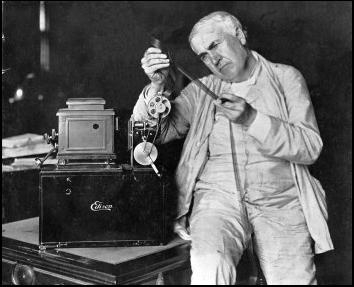
All of you must love movies, and pictures that move on the screen are nothing new to us. However, this technological wonder was a great novelty when it first came, during the latter half of the 19th century.
Edward Muybridge, a British photographer took still photos of people and animals in motion, and mounted them on a spinning frame. When they were projected onto a screen with the frame spinning, the pictures appeared to be moving. This was in 1878.
Muybridge’s device caught Edison’s attention early in 1888. He decided to go further ahead with this. Edison’s idea was to make the first practical movie camera and projector, and chose a Scottish assistant named William Dickson for help. The camera they made was called ‘kinetograph’, and it used the celluloid film strip which George Eastman had just invented. Dickson came up with the brilliant idea to make small holes along both sides of the film, to make it run smoothly over notched wheels inside the camera.
The world’s first film studio was built in the laboratory yard. The studio got a funny nickname, ‘Black Maria’, because its insides were painted black. Sunlight came through the roof, and the whole building could be rotated to get the best lighting for the performers. The ‘movies’ they made were to be seen in a viewing instrument called the kinetoscope. It was a machine one peeped into. Ten ‘pay-to peep’ machines were installed for the public in New York City, in 1894. Huge crowds turned up to peer through an eyepiece and watch the 90-second films.
Picture Credit : Google



